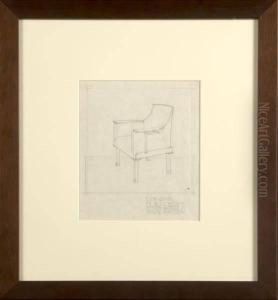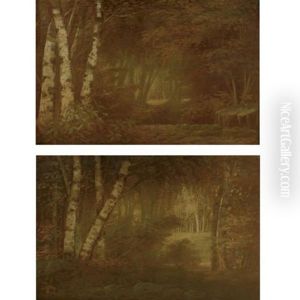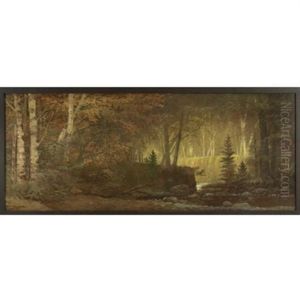George Mann Niedecken Paintings
George Mann Niedecken was an American interior architect and designer born in Milwaukee, Wisconsin, in 1878. His work is often associated with the American Arts and Crafts movement and he is best known for his collaborations with the prominent architect Frank Lloyd Wright. Niedecken studied at the Art Institute of Chicago and later in Europe, where he was influenced by the Vienna Secession and the work of Charles Rennie Mackintosh.
After returning to the United States, Niedecken established his own firm, Niedecken-Walbridge Co., which specialized in interior design and decorative arts. His approach to design was holistic; he believed in creating harmonious environments through the integration of architecture, furnishings, and decorative elements. This philosophy aligned well with Wright's own ideas about organic architecture and the two worked closely on several commissions.
Niedecken's contributions to these projects included designing interior details such as furniture, stained glass, and textiles. Perhaps the most famous of these collaborations was for the Frederick C. Robie House in Chicago, where Niedecken's interior work complemented Wright's revolutionary exterior design.
Despite his successful partnership with Wright, Niedecken also maintained an independent career. His firm produced a wide range of designs for homes, commercial spaces, and public buildings. His work expressed the ideals of the Arts and Crafts movement, emphasizing craftsmanship, simplicity, and the use of natural materials.
Niedecken continued to work in Milwaukee throughout his life, contributing significantly to the city's architectural and artistic heritage. He passed away in 1945, leaving behind a legacy of artistry that bridged the gap between decorative arts and architecture. His work continues to be studied and appreciated for its contribution to American design and its unique synthesis of European and American influences.



